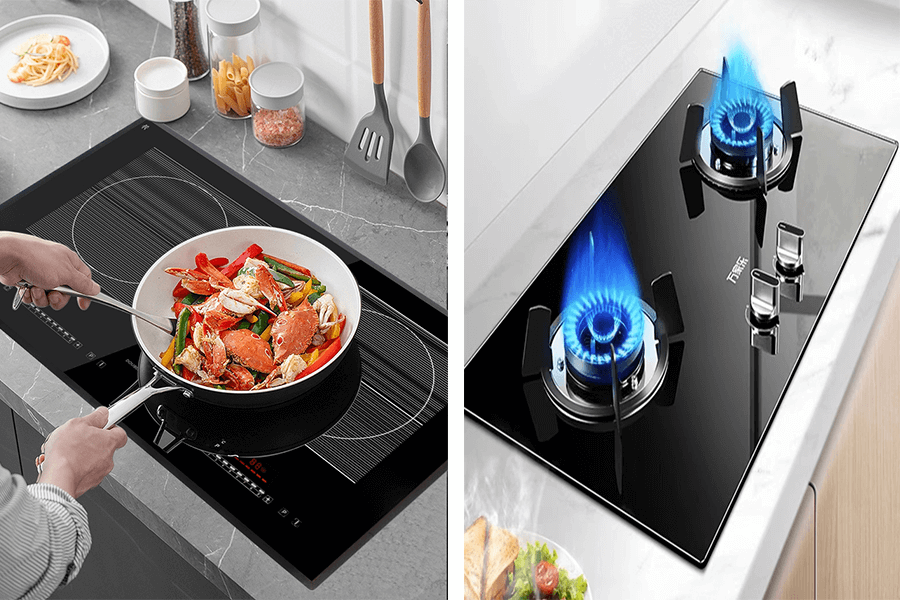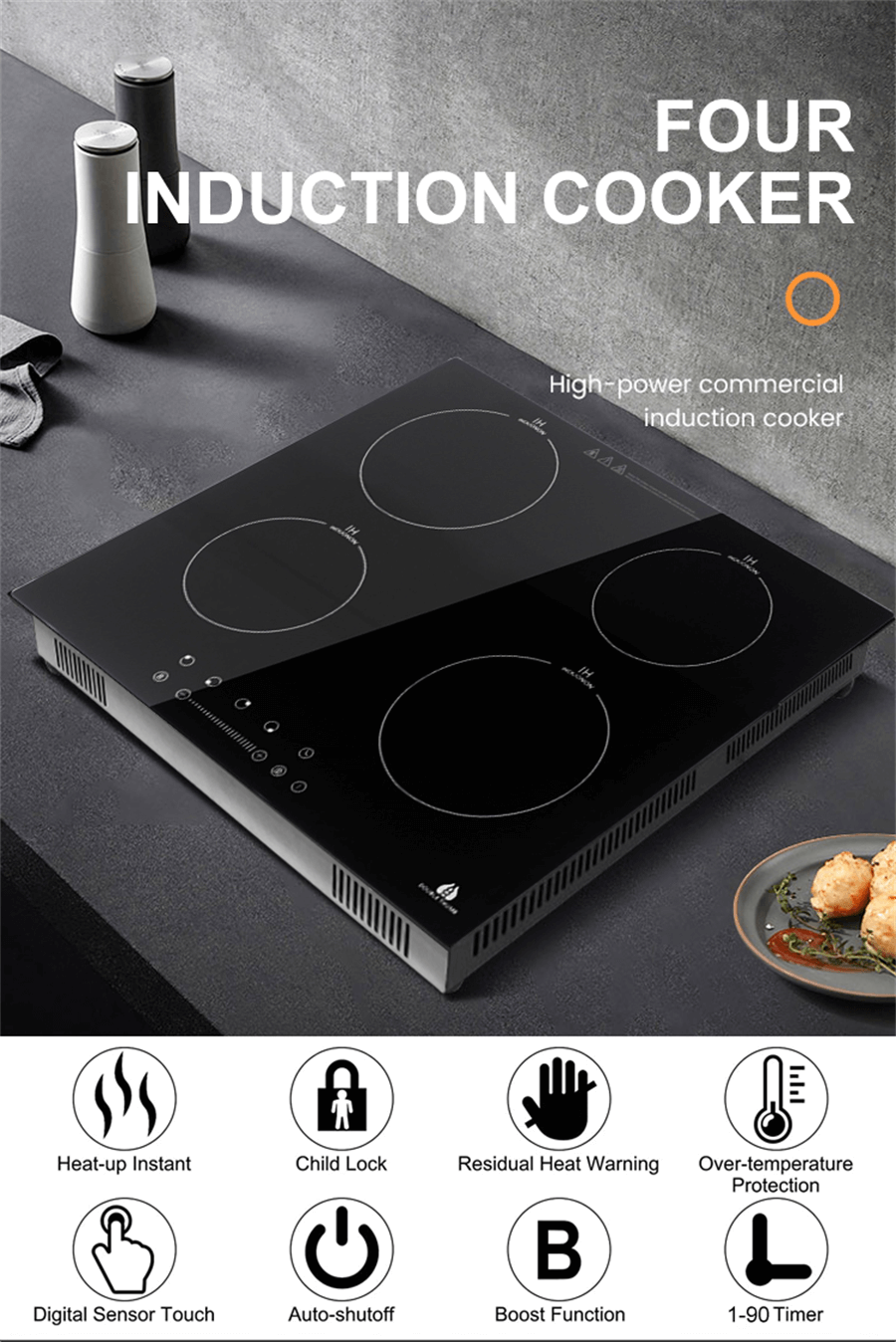
The world is facing increasing concerns about carbon emissions, climate change, and the need for sustainable energy sources. In this context, many countries are taking significant steps to reduce their carbon footprint and promote cleaner alternatives for cooking. One particular trend that is gaining momentum is the suspension of gas usage and the transition to electric stoves. This essay aims to explore the environmental impact of gas stoves, highlight the advantages of electric stoves, discuss countries leading the transition, address challenges and solutions, analyze the role of technology and innovation, and examine future possibilities and global implications.
The Environmental Impact of Gas Stoves
Gas stoves have long been a popular choice for cooking due to their affordability and convenience. However, they pose significant environmental challenges. The combustion of natural gas releases carbon dioxide (CO2), a potent greenhouse gas, into the atmosphere, contributing to climate change. According to data from the International Energy Agency (IEA), residential gas emissions accounted for approximately 9% of global CO2 emissions in 2020. Furthermore, gas stoves also emit pollutants such as nitrogen oxides (NOx), volatile organic compounds (VOCs), and particulate matter (PM), leading to air pollution and its associated health impacts.
The Advantages of Electric Stoves
Electric stoves offer numerous advantages over their gas counterparts. Perhaps the most significant benefit is their energy efficiency. According to the U.S. Department of Energy, electric stoves are approximately 80-95% energy efficient, while gas stoves typically achieve an efficiency rate of around 45-55%. This higher efficiency translates into lower energy consumption and decreased carbon emissions. Furthermore, electric stoves do not produce indoor air pollution, a significant health concern associated with gas stoves. The World Health Organization has estimated that exposure to household air pollution, primarily from cooking with solid fuels like gas, leads to over 4 million premature deaths annually.
Electric stoves eliminate this risk, providing a healthier living environment for millions of people worldwide. Additionally, electric stoves offer versatility as they can be powered by renewable energy sources such as solar or wind power, further reducing their environmental impact.
Countries Leading the Transition
Several countries and regions are at the forefront of the transition from gas to electric stoves, implementing policies and initiatives to promote cleaner cooking alternatives.
Denmark: Denmark has also made significant progress in moving away from gas stoves. The government has introduced measures to promote energy-efficient electric cooking appliances and renewable energy sources.
Norway: Norway is known for its ambitious climate goals and commitment to renewable energy. The country has taken steps to discourage the installation of new gas infrastructure and promote electric alternatives, such as induction cooktops.
Sweden: Sweden has been at the forefront of transitioning away from fossil fuels, including phasing out gas stoves. The government has implemented various policies and initiatives to promote the use of electric stoves and induction cooktops.
The Netherlands: The Netherlands has set a goal to significantly reduce greenhouse gas emissions. As part of their efforts, the Dutch government is actively discouraging gas stove installations and encouraging the switch to electric cooking appliances.
New Zealand: New Zealand aims to be carbon-neutral by 2050 and has made strides in decarbonizing various sectors, including cooking. The government has launched programs to promote energy-efficient electric cooking technologies, providing incentives for households to replace gas stoves with electric alternatives.
Other countries taking significant steps include Australia, which aims to transition to all-electric appliance homes by 2050 , and in the United Kingdom, the government has announced a ban on gas stove installations in new homes from 2025. This ambitious move is part of the country's commitment to achieving net-zero emissions by 2050. Similarly, the government of California, in the United States, has announced plans to phase out new gas-powered appliances, including stoves, by 2022.These countries' efforts are backed by incentives, subsidies, and awareness campaigns to encourage the adoption of electric stoves and accelerate the transition.
As global focus on decarbonization and reducing greenhouse gas emissions continues to increase, overall the shift from gas to electric furnaces is a global trend, although policies and initiatives may vary from country to country.
Challenges and Solutions
While the transition from gas to electric stoves presents numerous benefits, it is not without its challenges. One of the significant obstacles is the need for infrastructure upgrades to support increased electricity demand. Electric stoves draw more power than gas stoves, necessitating upgrades to electrical grids and capacity. This requires substantial investment and careful planning by utility companies and policymakers. Additionally, the initial cost of electric stoves can be higher than gas stoves, posing affordability concerns, especially for lower-income households.
However, innovative solutions are emerging to overcome these challenges. For instance, some countries have implemented subsidy programs or tax incentives to make electric stoves more affordable for consumers. Furthermore, public education and awareness campaigns are fundamental in dispelling misconceptions and promoting the long-term benefits of electric stoves.
The Role of Technology and Innovation
Technology and innovation play a pivotal role in accelerating the adoption of electric stoves and overcoming the challenges associated with the transition. Advancements in smart home technology have made it easier for consumers to manage their energy consumption efficiently. Smart appliances, including electric stoves, can be integrated into smart grids, allowing for demand response programs and optimizing energy consumption during peak periods.
Another significant development is the rise of induction cooking, a technology that uses electromagnetic fields to heat cookware directly, rather than relying on an open flame or heated element. Induction cooking offers rapid heat response, increased energy efficiency, and precise temperature control. As technology continues to advance, energy storage solutions like batteries could also play a crucial role in ensuring a stable and reliable electricity supply when transitioning to electric stoves.
Future Possibilities and Global Implications
The trend of countries suspending gas usage and transitioning to electric stoves has significant global implications. As more countries adopt this approach, there is the potential for a substantial reduction in carbon emissions and improved air quality. The decrease in gas consumption can contribute to international climate change mitigation efforts and advance sustainable development goals.
Furthermore, the transition presents economic opportunities and job creation through the increasing demand for electric stoves and renewable energy sources. By embracing this trend, governments can foster green economies and position themselves as leaders in the global fight against climate change.
Conclusion
The suspension of gas usage and the transition to electric stoves represents a crucial step towards reducing carbon emissions and improving air quality globally. Gas stoves have significant environmental drawbacks, including high emissions and indoor air pollution. Electric stoves provide a range of advantages, including higher energy efficiency, zero indoor air pollution, and the potential to be powered by renewable energy sources. Countries such as the United Kingdom, California, Australia, and Sweden are leading the transition, implementing policies and initiatives to encourage the adoption of electric stoves. While challenges exist, such as infrastructure upgrades and affordability concerns, innovative solutions and advancing technologies offer promising avenues for overcoming these obstacles. With the trend growing, there is a potential for substantial global impact in terms of reduced carbon emissions, improved air quality, and economic opportunities. By embracing clean cooking alternatives, countries can pave the way for a cleaner, healthier, and more sustainable future.
Why Choose Us: SMZ's Top Induction Cooktops & More
When it comes to finding the perfect induction or ceramic cookware for your kitchen, SMZ is the company to trust. With many years of experience in developing and producing high-quality stoves, SMZ has earned an excellent reputation according to strict German quality standards. In addition, SMZ also provides OEM/ODM services for high-quality cookware brands, further solidifying their commitment to provide top-quality products.
SMZ stands out from its competitors with its advanced R&D technology. The company is constantly striving to innovate and improve its product line to meet the ever-changing needs of customers. This dedication to staying ahead has resulted in unique and durable product craftsmanship that sets SMZ apart in the industry. Choosing SMZ means choosing innovation and reliability.
One of the key factors that make SMZ products so great is the use of high quality materials. SMZ cooperates with reputed material manufacturers to ensure the highest quality of their products. For example, the chips for their induction hobs and ceramic cookware are made by Infineon, a manufacturer known for its superior semiconductor solutions. In addition, SMZ uses glass from well-known manufacturers such as SHOTT, NEG and EURO KERA. These partnerships ensure that every SMZ product is made from the highest quality materials.
SMZ offers a wide range of products to meet the needs of every kitchen. A popular choice is the induction hob, which provides fast, efficient and precise cooking. Induction technology ensures that heat is only generated when the pot or pan is placed on the hob, making it an energy-efficient option. SMZ induction hobs come with safety features like automatic shut-off and child lock for peace of mind while cooking.
Another great option from SMZ is their ceramic cookware. This stylish choice enhances any kitchen decor while providing superior cooking performance. Not only is the ceramic surface easy to clean, but it has excellent heat distribution, ensuring your food cooks evenly every time. With its multiple cooking zones and intuitive controls, the SMZ Ceramic Cookware is a versatile addition to any kitchen.
For those looking to maximize their cooking space, SMZ offers the Domino cooktop. This compact option allows you to combine different cooking zones, providing flexibility for your cooking arrangements. With precise temperature control and fast heat-up times, the Domino cooktop allows you to cook multiple dishes at once without compromising quality.
With a commitment to quality, innovation and customer satisfaction, it's no surprise that SMZ is a top name in cooktops. Whether you need induction hobs, ceramic cookware or domino cookers, SMZ has the perfect solution for you. Choose SMZ and experience the superior quality that makes them a trusted name in the industry.

Feel free to contact us anytime! We're here to help and would love to hear from you.
Adress: 13 Ronggui Jianfeng Road, Shunde District, Foshan City, Guangdong,China
Whatsapp/Phone: +8613509969937
mail: sunny@gdxuhai.com
General Manager
Post time: Sep-01-2023



